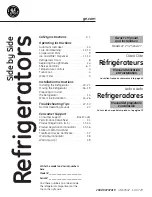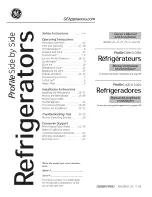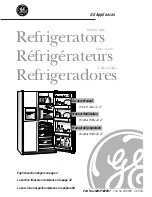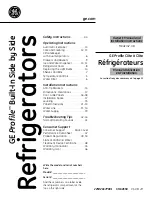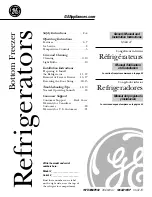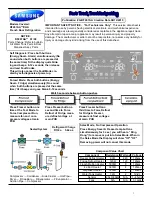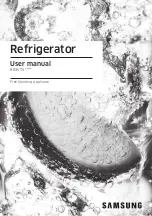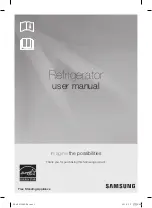
169893
1) Shelves
• The shelves may be placed in any of the guide slots within the
interior of the appliance. They are protected from sliding out.
• To remove a shelf: Take off all of the items that are stored on
the shelf that you want to remove. Then lift the front of the
shelf and carefully pull it out of the grooves.
• Certain models are equipped with a wire bottle rack, this is
protected from being pulled out whilst bottles are stored in it.
• It can only be removed with no bottles in it, by lifting the front
section and pulling it towards you.
• Place the bottle rack in the appliance, in such a way that it
does not obstruct the closing of the door.
The maximum load of the rack is 9 bottles of 0.75 litres, or
13 kilograms of total mass.
2) Defrost water outlet
• The interior of the refrigerator is cooled by the cooling plate
that is on the rear wall. Beneath this there is a channel and an
outlet for the defrost water.
• It is important that this channel never becomes clogged
(see Defrosting the refrigerator compartment for a detailed
explanation of how to keep the channel clear).
3) Crisper drawers and cover
• The crisper drawer is in the bottom of your refrigerator and
there is a cover that goes over it.
• The cover helps to prevent fruit and vegetables from drying out
prematurely.
4) Upper door shelves
• The door liner holds various shelves, that are suitable for
storing eggs, cheese, butter and yogurt. As well as smaller
packages, tubes, cans etc.
5) Bottle shelf
• The lower shelf should be used for storing reasonably sized
bottles.
IMPORTANT: NONE OF THE SHELVES THAT SIT IN
THE DOOR SHOULD BE OVERLOADED, AS THIS WILL
DRASTICALLY REDUCE THEIR WORKING LIFE.
6) Fan (certain models only)
• The fan is located under the ceiling or hidden behind the rear
panel of the refrigerator. This ensures even distribution of
temperature and reduces condensation on the storage racks.
8
Description of the
product features
169893en.indd 8
169893en.indd 8
12.10.2006 11:41:42
12.10.2006 11:41:42

























